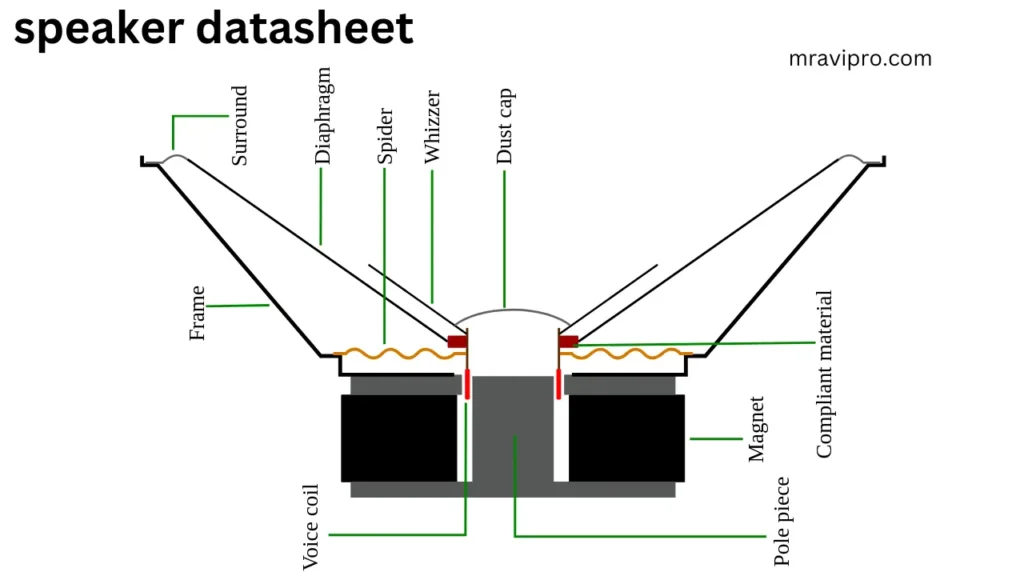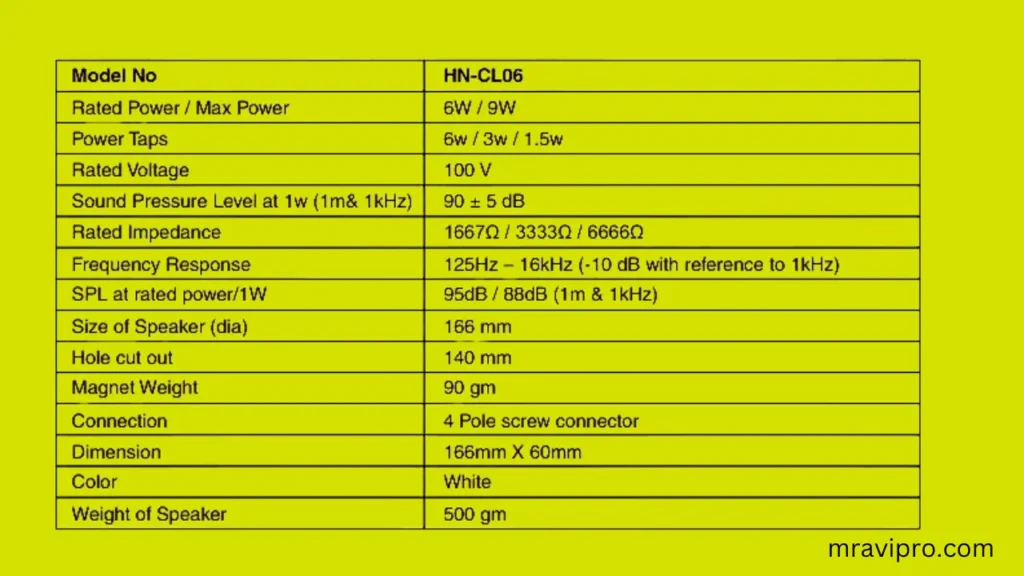Without speakers, our audio systems cannot generate the immersive sound quality that enables us to enjoy music, movies, and other types of entertainment. Knowing how speakers operate can help us appreciate the technology that makes them possible. Since a speaker is a crucial component of our audio experience, this article will examine its parts, operation, types, and enclosures.

How Does a Speaker Work?
Speakers transform electrical energy into mechanical energy. Induced magnetic fields are created by passing electric currents through wire coils. When air is compressed by mechanical energy, it produces a sound pressure level (SPL). Energy is changed from one state to another in speaker technology. Let’s investigate them thoroughly.
Diaphragm or Cone
A thin, semi-rigid membrane used in dynamic loudspeakers vibrates in a magnetic gap to generate sound. Although not all diaphragms have a cone-like shape, a diaphragm can also be called a cone1. As a speaker’s diaphragm vibrates, you can hear audio waves. The cone vibrates as a result of coils inside the driver pushing on its back in response to electromagnetic signals.
Voice Coil
The voice coil of a speaker is actually just an electromagnet, as it turns out. Coils of wire are wrapped around magnetic metals, such as iron, to create electromagnets. The north and south poles are formed when a magnetic field around a coil of wire carrying an electrical current attracts the metal in the center. The coil and associated cone of the speaker move back and forth as a result of the magnetic field’s interaction with the speaker’s permanent magnet.
Magnet
Permanent magnetic fields are provided for coils by magnets in speakers. The quickly alternating current in the coil not only supplies an electric field but also produces one. The cone moves back and forth as a result of the interaction between the two fields.
Suspension System
The surround and the spider make up a speaker’s suspension mechanism. The voice coil is held in place by the spider, a flexible material that lets it move about freely in the magnetic field. The speaker frame and the outer border of the diaphragm are joined by a flexible ring called the surround. It supports the diaphragm’s stability and appropriate alignment throughout the movement.
Frame or Basket
The structural element that keeps every component of the speaker together is the frame, which is also known as the basket. The suspension system, voice coil, magnet, and diaphragm are all supported by and protected by it. The frame, which is commonly comprised of plastic or metal, is the medium through which diaphragm vibrations are transferred.
Electrical Signal
The input that powers the speaker and generates sound is the electrical signal. It comes from an audio device like a computer, smartphone, or speaker. Different sound frequencies and amplitudes are represented by differences in voltage that are carried by the electrical signal. The parts of the speaker translate these differences into mechanical vibrations, which result in sound waves.
How Does a Speaker Work Explanation in English
Sound Waves
A longitudinal wave that is traveling through an elastic material, like air, is a sound wave. Longitudinal waves created by vibrations move through the air to your ears. High-pressure and low-pressure zones alternate with one another while traveling at a set pace to form sound waves. Around equilibrium pressure at a specific time and location, periodic pressure change takes place.

- Also, Read This Article:- 12V 7Ah Battery Charger Circuit Diagram
- Also, Read This Article:- 3.7Volt Li-ion Battery Charger Full Details & solution.
- Also, Read This Article:- How to Make a BLDC Motor ESC Using MOSFET
- Also, Read This Article:– 555 timer ic use throttle or accelerator sensor circuit diagram
- Also, Read This Article:- How to Make a BLDC Motor ESC Using MOSFET
- Also, Read This Article:- 5V PWM Signal Booster Convert 12V PWM Signal Generator
- Also, Read This Article:- How to Make a BLDC Motor ESC Using MOSFET
- Also, Read This Article:- RU6888r Mosfet Datasheet Full Details Download Free
- Also, Read This Article:- Coreless Motor For Drone
FAQ
How does a speaker produce different frequencies of sound?
By rapidly moving the internal voice coil with magnetic force, speakers may produce a variety of sounds. This quick voice coil movement generates a range of sound frequencies, enabling a speaker to make sounds with diverse pitches. In actuality, as the coil travels, speakers rapidly produce a wide range of frequencies. The coil moves enough for us to receive those frequencies on its own. As a result, only one voice coil in a speaker is required because it can move too quickly to produce the frequencies needed to play the sounds. Whether the cone moves very little or very much, loudspeakers will play loudly.
Can speakers reproduce all sounds in the same way?
The range of frequencies that speakers can accurately reproduce is known as their frequency response range. The frequency response ranges of various speakers vary, and some speakers may operate more effectively in a given frequency range than others. For the best audio reproduction, it’s critical to select speakers that can handle the necessary frequency range.
Can a speaker work without an amplifier?
Speakers typically need amplifiers to magnify electrical signals and supply enough power to operate the speaker. The signal’s voltage and current levels are elevated by the amplifier to a level sufficient for driving the voice coil of the speaker. However, other speakers, such as powered or active speakers, do not need an extra amplifier.
How does speaker impedance affect audio systems?
The electrical resistance that the speaker presents to the amplifier is referred to as speaker impedance. It is essential to audio systems because it affects how much power is sent to the speaker. The best power transfer and protection of the amplifier and speaker are achieved by matching the output impedance of the speaker to that of the amplifier.
How Does a Speaker Work Explanation in Hindi
Conclusion
In conclusion, speakers are remarkable devices that convert electrical signals into sound waves through the interaction of various components. The diaphragm, voice coil, magnet, suspension system, and electrical signal all work together to create the audio experience we enjoy. Understanding the simple explanation behind how speakers work allows us to appreciate the technology behind them and make informed choices when selecting speakers for our audio needs.
Next time you listen to your favorite song or watch a movie, take a moment to appreciate the complex yet elegant process happening within your speakers. The magic lies in the synergy between electricity, magnetism, and mechanical movements, all working together to bring sound to life. leslie speaker